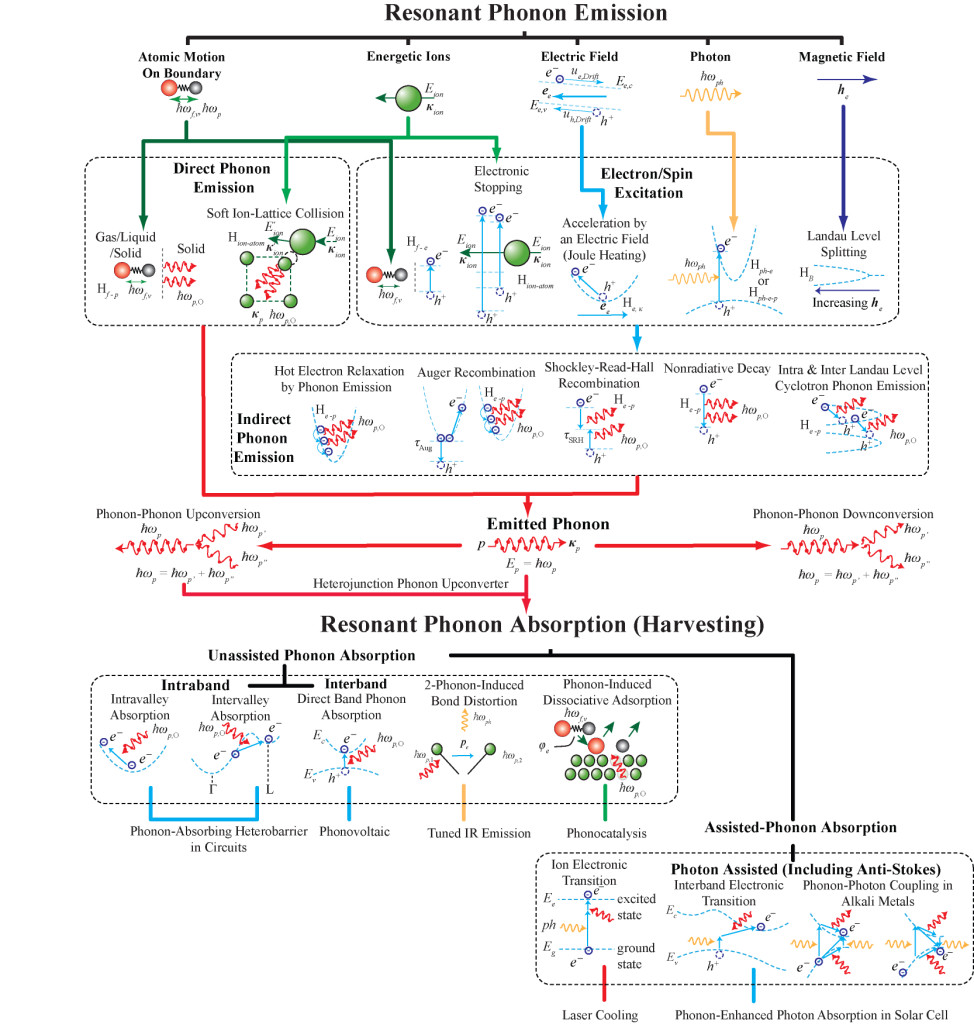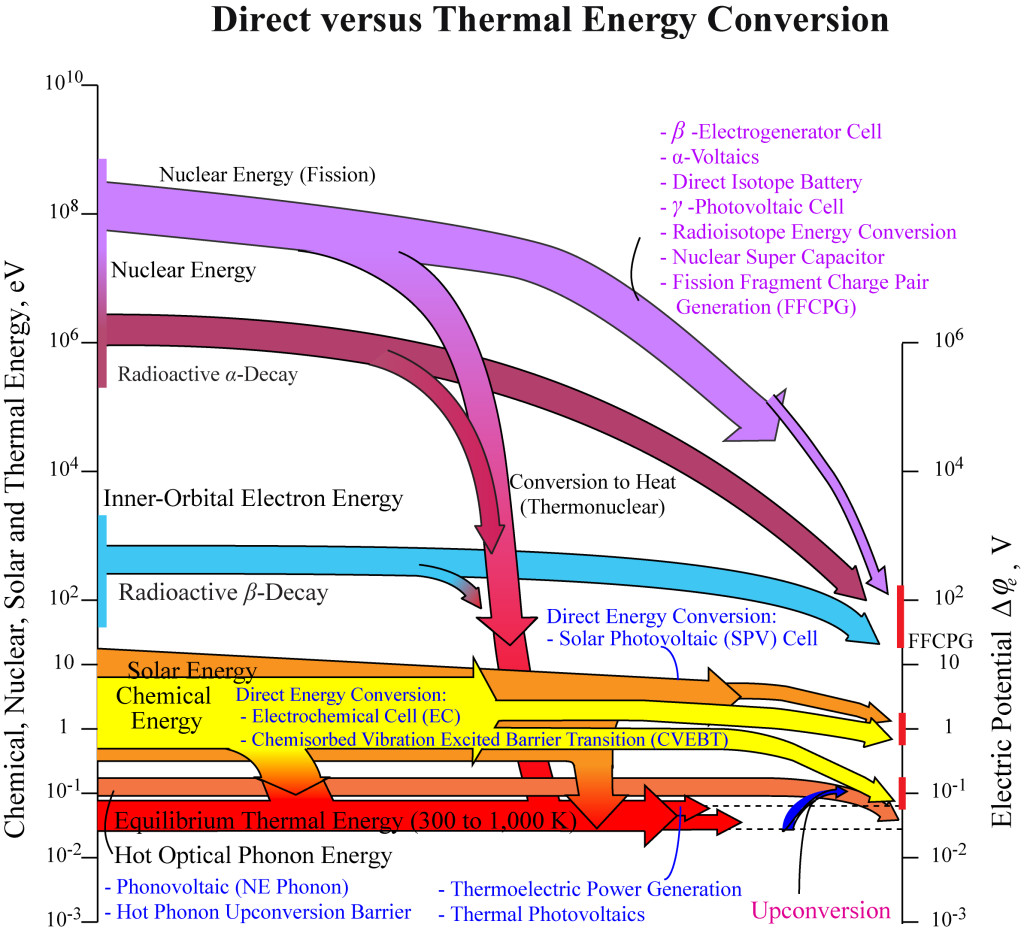
Efficient and innovative energy transport and conversion (transformation) require progressively more atomic tailoring of principal energy carriers (phonon, electron, fluid particle, and photon). This involves atomic-level material synthesis for the desired atomic-level energy transport and conversion kinetics. Thermal energy (kinetic energy of atomic-level motions in solid and fluid phases) is central to energy conversion, since when improperly designed the inefficiencies lead to undesirable heat generation. Atomic-level examinations show that the thermal energy has quantum or resonance features which can be used in the energy conversion before it is thermalized by scattering (i.e., becomes equilibrium carrier energy distribution which is less useful). Figure below shows the sources of phonon emission (beginning of heat generation in solids), and resonant phonon harvesting.
In our Heat Transfer Physics research, we seek this atomic-structure design (including nanostructures and quantum confinements) and optimization of the carrier energy kinetics (transition rates). This is rendered in the figure below. Our current research projects include laser cooling of solids, phonon recycling in transistors, phonovoltaic, α-voltaic, and phonocatalysis. We work on high figure-of-merit thermoelectric materials around the role of phonons. We are also working on the molecular dynamics explanation of the thermoreceptor gating.
Our approach is theoretical with combination of quantum mechanics (first-principles calculations), molecular dynamics, Boltzmann transport (mesoscale), and macroscale treatments. We also do collaborative experimental work (X-ray, optical, Raman, neutron and electron scattering, and thin-film fabrication and characterization).


